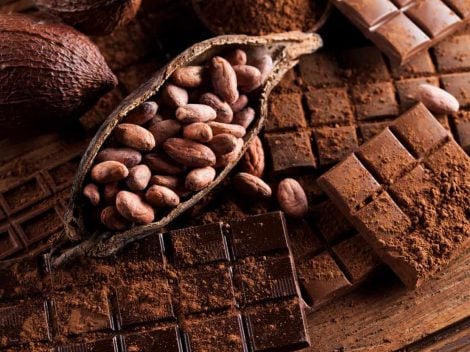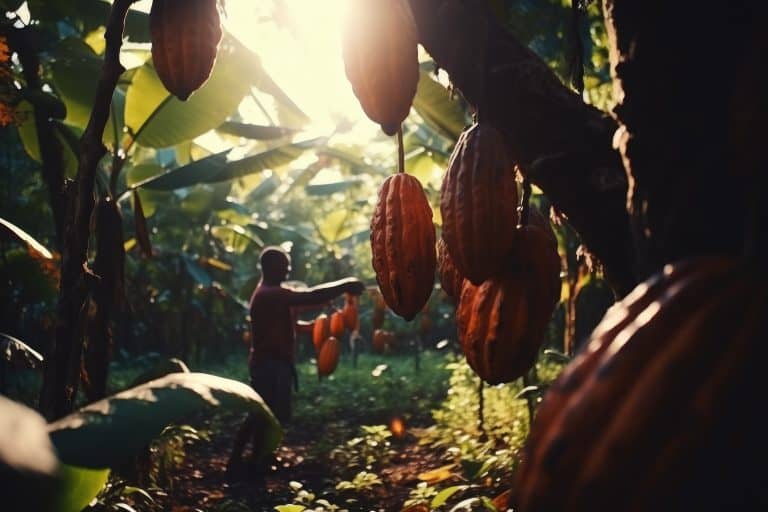by Lorenzo Santucci
Last month, the Ghana Cocoa Board (Cocobod) used part of the $200 million loan to revitalize plantations affected by the cocoa virus that has been ravaging production, halved compared to the record set two years ago. Approximately 500,000 hectares of land have been destroyed by the epidemic and a series of factors that have officially opened the crisis for the world's second-largest cocoa exporter. With logical impacts globally, starting with a price hike that is crippling the sector. To find a deficit in the market spanning four years, as is happening, one must go back over fifty years.
The weight of climate change
Other factors contributing to this situation are environmental and human, often both together since deforestation inevitably leads to extreme events. Such as the El Niño phenomenon, which has resulted in rising temperatures affecting crops.
Added to these are economic reasons. Already six years ago, Cocobod used a $600 million loan to rehabilitate old plantations or those affected by the virus. According to estimates, the first results of the new treatment will be seen in at least five years. The lands where its farms are located will be rehabilitated, cutting or uprooting infected trees entirely, and then returned to farmers. But the problem has already emerged in all its power and also involves the other major cocoa producer.

The Ivorian case
Ivory Coast, which accounts for about half of global production, is facing similar challenges to the other West African country. One of its main plantations, Transcao, has stopped buying cocoa beans due to the high prices that have doubled costs compared to the previous year. In February, at the New York market, the price of cocoa reached its highest level in history, hitting $5,870 per ton.
This has caused the entire production chain to collapse. Previously, farmers sold their beans to local traders who then resold them to large international companies, all at predetermined prices. Now, it doesn't work like that anymore. Multinationals now buy at any cost to meet demand, which risks not being met. After making its calculations, the International Cocoa Organization (ICCO) predicted a seasonal production decline of nearly 11%, leaving a gap between demand and supply of 374,000 tons - last year there were 300,000 fewer. If the trend is not reversed, the race for cocoa could become even tighter.
Without beans, there is no chocolate, it goes without saying. Nor is there butter or liquor. And not even arms are needed for work, with the Ghanaian Cocoa Processing Company reducing its workforce by one-fifth. Not good news for Easter, where chocolate is usually the main protagonist while now the entire sector has entered a crisis from which it seems complicated to emerge.


 Meloni: "Tariffs? If necessary, there will be consequences. Heavy impact on agri-food sector"
Meloni: "Tariffs? If necessary, there will be consequences. Heavy impact on agri-food sector" The Government honours the greats of Italian cuisine, from Bottura to Pepe. Massari: "Thank you, Meloni, the only one who listened to us"
The Government honours the greats of Italian cuisine, from Bottura to Pepe. Massari: "Thank you, Meloni, the only one who listened to us" "We must promote a cuisine that is not just for the few." Interview with Massimo Bottura
"We must promote a cuisine that is not just for the few." Interview with Massimo Bottura Wine was a drink of the people as early as the Early Bronze Age. A study disproves the ancient elitism of Bacchus’ nectar
Wine was a drink of the people as early as the Early Bronze Age. A study disproves the ancient elitism of Bacchus’ nectar "From 2nd April, US tariffs between 10% and 25% on wine as well." The announcement from the Wine Trade Alliance
"From 2nd April, US tariffs between 10% and 25% on wine as well." The announcement from the Wine Trade Alliance






